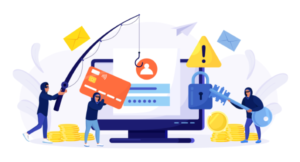The astronomical rise of subscription businesses represents one of the most disruptive online business shifts in history. Fueled by advancements in recurring billing technology paired with pandemic conditions accelerating digital lifestyles, subscriptions encompass everything from media streaming, news and magazines, curated boxes, business tools, and much more. These subscriptions generate over $650 billion in global sales every year as consumers increasingly gravitate to discounted, convenient recurring deliveries.

However, this success story has a dark side. Experts estimate average subscription fraud rates are over 5% – are 3-4 times higher than those in non-subscription businesses. In certain industries, instances of fraud can even exceed 15%. The central pillars underpinning subscription profitability are precisely what fraudsters leverage.
Types of Fraud Disproportionately Afflicting Modern Subscription Merchants
While fraud affects all online businesses, several schemes uniquely or disproportionately plague companies relying on automatic recurring payments and continuous customer engagement, including:
Account Takeovers
Savvy hackers employ phishing links, social engineering phone calls, malware infections, SMS attacks, and other techniques to steal subscribers’ credentials and takeover accounts. Once inside, unlimited financial and data access afforded enables fraudsters to:
- Make unlimited purchases with stored payment methods
- Drain available promotional credits
- Access and alter all account data at will
- Adjust email, passwords, and security settings for repeated access
Without controls, monthly subscription services often don’t register takeovers for weeks, enabling extensive damages.
Rampant Password Sharing
A 2021 study estimated over 200 million global media subscription users leverage shared passwords. While mostly well-intentioned, this saves people billions in costs annually, severely eroding providers’ revenues.

However, password sharing also widely exposes accounts by allowing outside parties full access. Any shared credential then potentially enables abuse or account takeover by those with malicious aims as well, should they manage to steal it.
And without direct account ownership, receiving vital payment confirmations, renewal prompts, outage notices, and other communications also proves challenging for those not officially subscribers, creating transparency issues.
Recurring Chargebacks & Friendly Fraud
Illegitimate chargebacks tied to subscriptions generated over $19 billion in false refunds in 2022 as consumers disputed previously authorized transactions despite continued usage and service delivery long after original purchases.
Proving otherwise months or years later and documenting extensive purchase terms for each recurring transaction can strain resources for merchants. And financial institutions tend to side with their own customers, forcing refunds.
Affiliate and Promotion Abuse
Dozens of shady online companies have surfaced allowing users to sell their subscription trial eligibility to the highest bidder, and defrauding affiliate programs that pay bounties for legitimate sign-ups.

Merchants face extreme difficulty identifying real users among the floods of leads now originating from pop-up “fraud factories”.
Similarly, limited-time discounts and first-month promotions provide key consumer acquisition tools. But fraud rings systematically create numerous accounts, purely to leverage such discounts rather than actually use services long-term.
Cheap prepaid and virtual cards, among other tactics, let them cash in while dodging defenses.
Impacts of Unchecked Subscription Fraud
Industry analysis shows over 9% of all subscription transactions now involve confirmed fraud, contributing to tens of billions in losses as merchants write off stolen credits, refund disputed charges, lose revenues, incur fees, absorb dispute costs, and suffer brand reputation loss through online complaints.

And beyond strictly financial damages, subscription fraud threatens:
- Customer churn as identity theft victims freeze accounts
- Bloated account support costs by answering takeover inquiries
- Spiraling IT expenses to contain data breaches
- Steep credit card processing rate increases
- Stricter bank scrutiny of all merchant transactions
- Legal and investigative expenditures
- Tighter payment acceptance policies
- Negative publicity and brand reputation loss
Meanwhile, ingenious new subscription monetization models across expanding sectors—from software to transportation to medicine and more—further raise stakes as many companies stand to lose big from fraud infiltration absent proper precautions.
Core Drivers Behind Subscription Fraud
Subscription-based services are increasingly popular, but this popularity comes with its own set of challenges, particularly in terms of fraud. Let’s dive into the core aspects that make subscription models particularly susceptible to fraudulent activities.
Automatic Recurring Billing

Automatic billing is a double-edged sword. On one hand, it simplifies the payment process by eliminating the need for constant authorization. However, this convenience also brings risks. If a customer’s credentials are compromised, fraudulent charges can recur unnoticed. It’s like leaving your house door unlocked – convenient for you but a golden opportunity for someone with bad intentions.
Delayed Delivery Cycles
The subscription model often involves a time lag between transactions, shipments, and customer feedback. This delay can act as a cloak of invisibility for fraudsters. Problems may remain hidden for longer periods, like a slow leak that goes unnoticed until the damage is significant.
Reliance on Continuity
Subscriptions thrive on continuity rather than constantly acquiring new customers. This focus can sometimes lead to less scrutiny on account changes, inadvertently paving the way for account takeovers. It’s akin to a gardener so focused on nurturing existing plants that they fail to notice weeds sprouting up.
Accrual of Value
Over time, accounts in subscription services can become treasure troves, accumulating credits, rewards, or valuable assets. This gradual build-up makes them highly attractive targets for fraudsters, much like a slowly filling piggy bank tempts a thief.
Growth Imperative
The relentless drive to increase subscriber numbers can sometimes lead businesses to cut corners in security vetting. In the race to grow, warning signs of fake accounts might be overlooked, rather like a company so eager to fill positions that it skips thorough background checks.

These factors combine to create a fertile ground for subscription fraud. However, it’s important to note that these attributes also offer unique opportunities for prevention and mitigation, which we will explore in the next section. By understanding the vulnerabilities, businesses can fortify their defenses, turning potential weaknesses into strengths.
Combating Subscription Fraud
Tackling subscription fraud is a complex but manageable challenge. Businesses can safeguard their recurring revenue streams by deploying a multi-layered defense strategy. Here’s a comprehensive look at the tactics that can fortify subscription models against fraud.
Real-time Data Tracking
Keeping a vigilant eye on usage patterns, payment declines, and location inconsistencies is crucial. It’s like having a high-tech security system in place, constantly monitoring for any signs of break-ins or suspicious activities.
Network Pattern Analysis
Fraudsters often operate in groups, leaving subtle clues that can be discovered through relationship-mapping tools. It’s like piecing together a puzzle, revealing the bigger picture of fraudulent networks.
Endpoint Security Standards

Strengthening internal systems is foundational to preventing account takeovers. This involves vetting, protecting, and monitoring.
Focused Analyst Reviews
Manual reviews of transactions with odd characteristics can fill gaps that automated systems might miss, akin to an experienced detective spotting clues others overlook.
Proactive Customer Engagement
Engaging with customers directly, especially in cases of address changes or unusual renewals, builds a transparent relationship while blocking unauthorized alterations.
For instance, cloud-based phone systems can implement two-factor authentication via phone calls or SMS for account changes, adding an extra layer of security. Moreover, the ability to track and record calls helps in maintaining detailed records of customer interactions, which can be invaluable in investigating and preventing fraud.
Public Subscriber Education
Informing subscribers about fraud prevention, account security, and scam avoidance is key. This approach is similar to community policing efforts, where public awareness plays a crucial role in crime prevention.
Vendor Risk Protections
Screening and monitoring third-party acquisition partners is essential to limit liability. This is akin to a company doing thorough background checks on its business partners to avoid future legal or reputational damage.
Air-tight Terms of Service
Clear legal language and public disclosures, especially on policies like promotional stacking, can deter ‘friendly fraud.’ It’s like setting clear ground rules at the start of a game to prevent arguments later.
Back-end Cyber Insurance
Insurance against hacking, theft, and fraud is a financial safety net. This is similar to having a robust insurance policy for your home or car – a backup in case of unforeseen events.
Ongoing Optimization
Continuously analyzing fraud data and updating policies ensures that defenses evolve as quickly as new threats. This ongoing process is like a race where both the runner and the track constantly change, requiring adaptability and endurance.
Furthermore, implementing rigorous data quality testing can help ensure that the data used for fraud detection and prevention remains accurate and reliable, enhancing the effectiveness of these strategies.
By embracing these strategies and understanding the unique dynamics of recurring billing, businesses can create a robust framework to counteract subscription fraud effectively.
Crucial Fraud Prevention Across the Subscription Lifecycle

To combat fraud in subscription services effectively, examining and fortifying every customer interaction point throughout their journey is vital. Here’s a breakdown of how to approach this:
Sign-up & Entry
- Identity Verification: Implementing strict checks through documentary and digital analysis helps weed out fabricated accounts, akin to a bouncer checking IDs at a club.
- Confirmation Processes: Using phone, email, and SMS confirmations during account activations ensures that the users are real and reachable.
- Device Fingerprinting: This technique spots unusual access points, like VPNs, which can be signs of automation bots at play.
Service Usage
- Consumption Monitoring: Rules that flag drastic usage changes can highlight potential credential sharing, a precursor to account takeovers.
- Geo-Tracking and Usage Analysis: Pairing location tracking with usage patterns helps pinpoint whether activities are logically consistent.
- Payment and Contact Scrutiny: Looking out for suspicious payment details or delivery points can signal account takeovers.
Billing Events
- Chargeback Monitoring: Keeping an eye on chargeback ratios helps distinguish between normal activity and alarming spikes.
- Change Confirmations: Directly confirming major changes with account holders reduces the risk of unauthorized access.
- Payment Authentication: Adding layers of authentication, especially when cards are updated, ensures transaction legitimacy.
Account Changes
- Security Checks: Asking for current passwords or recent purchase details before allowing changes to crucial account information deters fraudsters.
- Mandatory Re-authentication: Periodically re-validating credentials, especially for dormant accounts, reduces the risk of credential selling.
- Detail Analysis: Cross-checking changed details against account history helps identify suspicious alterations.
Offboarding & Churn
- Cancellation Analysis: Examining reasons for cancellations against typical churn patterns can identify potential fraud victims.
- Post-Cancellation Safeguards: Extending payment authorizations slightly beyond the final billings protects revenue and flags post-cancellation issues.
- Dispute Trend Analysis: Investigating spikes in disputed transactions after specific cohorts can reveal acquisition channels vulnerable to fraud.
Employing this comprehensive, interconnected approach across the entire subscriber lifecycle is critical. Fraudsters are persistent and constantly evolving their methods, so vigilance and adaptability are key. It’s like playing a strategic game of chess – always anticipating the opponent’s next move and being ready to counteract it effectively.
Final Thoughts
Today’s fraud reality mandates subscription businesses move beyond outdated notions of security as a final box to check or “cost of doing business”.
Instead, strategically investing in custom-tailored, analytics-driven anti-fraud frameworks provides a competitive advantage allowing merchants to sustain explosive subscription growth ambitions over the long haul.
Acting quickly to understand and prevent fraud from recurring payments can significantly contribute to building larger subscriber bases. This stands in contrast to those hindered by a lack of visibility into how customers and criminals engage with their business models.
With expanding opportunity comes intensified motivation for fraudsters. However, the same tools and insights used to create exceptional subscriber experiences also equip businesses to secure their recurring revenue models when applied strategically. Prioritizing protection around subscription vulnerabilities allows merchants to realize explosive growth ambitions sustainably over the long run by keeping fraud’s unavoidable encroachment firmly at bay.
About Author
Irina Maltseva is a Growth Lead at Aura and a Founder at ONSAAS. For the last seven years, she has been helping SaaS companies to grow their revenue with inbound marketing. At her previous company, Hunter, Irina helped 3M marketers to build business connections that matter. Now, at Aura, Irina is working on her mission to create a safer internet for everyone.
